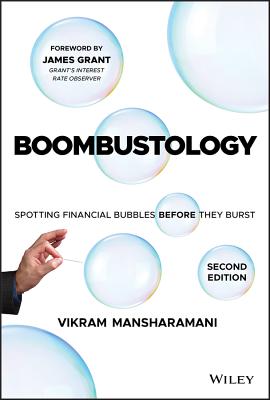Intermarket Analysis and Investing: Integrating Economic, Fundamental, and Technical Trends, 2/e (Paperback)
暫譯: 市場間分析與投資:整合經濟、基本面與技術趨勢,第二版(平裝本)
Michael E.S. Gayed
- 出版商: CreateSpace Independ
- 出版日期: 1990-10-15
- 售價: $1,020
- 貴賓價: 9.5 折 $969
- 語言: 英文
- 頁數: 510
- 裝訂: Paperback
- ISBN: 1481959611
- ISBN-13: 9781481959612
海外代購書籍(需單獨結帳)
買這商品的人也買了...
-
 精通 Python 3 程式設計, 2/e (Programming in Python 3: A Complete Introduction to the Python Language, 2/e)
精通 Python 3 程式設計, 2/e (Programming in Python 3: A Complete Introduction to the Python Language, 2/e)$680$537 -
 LINQ 設計模式 using C# 4.0 (LINQ to Objects Using C# 4.0: Using and Extending LINQ to Objects and Parallel LINQ (PLINQ))
LINQ 設計模式 using C# 4.0 (LINQ to Objects Using C# 4.0: Using and Extending LINQ to Objects and Parallel LINQ (PLINQ))$490$417 -
 Arduino 基礎入門套件 (附範例程式下載連結)
Arduino 基礎入門套件 (附範例程式下載連結)$950$903 -
 Excel VBA 活用範例大辭典 (2013修訂版)
Excel VBA 活用範例大辭典 (2013修訂版)$560$437 -
 透視 C語言指標-深度探索記憶體管理核心技術 (Understanding and Using C Pointers)
透視 C語言指標-深度探索記憶體管理核心技術 (Understanding and Using C Pointers)$480$379 -
 超圖解 Arduino 互動設計入門, 2/e
超圖解 Arduino 互動設計入門, 2/e$680$578 -
 王者歸來-HTML5 + CSS3 權威指南 (重力版)
王者歸來-HTML5 + CSS3 權威指南 (重力版)$790$672 -
 Microsoft Excel 2013 Programming by Example with VBA, XML, and ASP (Paperback)
Microsoft Excel 2013 Programming by Example with VBA, XML, and ASP (Paperback)$2,260$2,147 -
 Raspberry Pi Model B+ 512MB (Made in the UK)
Raspberry Pi Model B+ 512MB (Made in the UK)$1,600$1,520 -
 Responsive Web Design 自動調適型網頁程式設計-讓網頁在電腦 / 平板 / 手機完美展現
Responsive Web Design 自動調適型網頁程式設計-讓網頁在電腦 / 平板 / 手機完美展現$360$306 -
 ASP.NET MVC 5 網站開發美學
ASP.NET MVC 5 網站開發美學$780$616 -
 Make 國際中文版 vol.13 (Make: Volume 37 英文版)
Make 國際中文版 vol.13 (Make: Volume 37 英文版)$260$234 -
 雲端技術整合開發:手機 App、雲端平台與資料庫
雲端技術整合開發:手機 App、雲端平台與資料庫$520$494 -
 Android 程式設計入門、應用到精通 -第二版 (適用 Android L, 1.X~4.X, Android Wear 穿戴式裝置)
Android 程式設計入門、應用到精通 -第二版 (適用 Android L, 1.X~4.X, Android Wear 穿戴式裝置)$560$442 -
 Raspberry Pi 最佳入門與實戰應用-深入 Raspberry Pi 的全方位指南(附87段教學與執行影片/範例程式檔)
Raspberry Pi 最佳入門與實戰應用-深入 Raspberry Pi 的全方位指南(附87段教學與執行影片/範例程式檔)$450$356 -
 實戰物聯網開發|使用Arduino Yun (Internet of Things with the Arduino Yun)
實戰物聯網開發|使用Arduino Yun (Internet of Things with the Arduino Yun)$350$277 -
 Make 國際中文版 vol.14 (Make: Volume 38 英文版)
Make 國際中文版 vol.14 (Make: Volume 38 英文版)$260$234 -
 HTML5: The Missing Manual, 2/e (國際中文版)
HTML5: The Missing Manual, 2/e (國際中文版)$580$458 -
 7吋 TFT LCD 螢幕
7吋 TFT LCD 螢幕$3,500$3,325 -
 Postfix 郵件系統建置手冊
Postfix 郵件系統建置手冊$680$537 -
 王者歸來-599 個 C# 企業專案開發完整範例集, 2/e
王者歸來-599 個 C# 企業專案開發完整範例集, 2/e$860$731 -
 WebGL 專業級 3D 引擎降臨-使用瀏覽器語言開發
WebGL 專業級 3D 引擎降臨-使用瀏覽器語言開發$680$578 -
 養成 iOS 8 App 程式設計實力的 25 堂課-最新 Swift 開發教學(A Practical Guide to Building Your First App from Scratch: Beginning iOS 8 Programming with Swift)
養成 iOS 8 App 程式設計實力的 25 堂課-最新 Swift 開發教學(A Practical Guide to Building Your First App from Scratch: Beginning iOS 8 Programming with Swift)$580$452 -
 Responsive Web Design 響應式網頁設計學習手冊 (Learning Responsive Web Design: A Beginner's Guide)
Responsive Web Design 響應式網頁設計學習手冊 (Learning Responsive Web Design: A Beginner's Guide)$580$458 -
 深入理解 Android 核心設計思想-核心解構篇
深入理解 Android 核心設計思想-核心解構篇$720$562
商品描述
Intermarket Analysis and Investing begins with an overview of investment analysis that examines types of risk and portfolio structuring. Then it moves on to the three prominent schools of thought in market analysis with discussions of:
- Economic analysis, which is primarily concerned with the state of business, and anticipates phases of economic expansion and contraction by focusing on economic indicators
- Fundamental analysis, the most widely followed and practiced form of analysis, it looks at the accounting and financial position of companies in an attempt to evaluate intrinsic worth and true stock value
- Technical analysis or the market-timing school, practiced by "believers in the supremacy of trend analysis," and followers of the ticker tape. It is primarily concerned with the dynamics behind the fluctuation in the price of a stock
This book also examines the positive aspects and pitfalls to contrarian investing, top-down and bottom-up market approaches, comparative market analysis, and common-sense trend analysis.
By integrating economic, fundamental, and technical quantitative analysis into a sensible working framework, Intermarket Analysis and Investing exposes the inherent short-comings of relying too heavily or exclusively on any single approach. Each school of stock market analysis is thoroughly examined so that the reader can understand each approach and how it interacts with the others.
Part II stresses the economic by analyzing the most important aspects of the business cycle, the Fed's role in managing the balance of inflation and unemployment, and factors investors should watch to tame market risk and minimize loss during downtrends. It is here that the importance of economic indicators is emphasized, with an in-depth discussion of the 11 leading indicators that monitor the economy and help the investor anticipate long-term business trends, the four coincident indicators that help verify the predictability of the leading indicators, and the lagging indicators that help spot emerging structural trends.
Part III discusses the use of fundamental analysis, which compares the growth and finances of different securities and industry groups. It shows how earnings, sales, book value, P/E multiples, leverage, liquidity, and/or profitability of companies are used to reveal the worth of a security as an investment. The commodities market and the effect of globalization of securities markets are also examined.
Part IV shows how quantitative market analysis aids active investors in determining the short-or immediate-term direction of stocks. Intermarket Analysis and Investing shows how to improve investment decisions by integrating the best features of fundamental analysis and some well-known market timing techniques described and illustrated in this section.
The final section of the book provides insightful investment strategies that are based on the intermarket relationships previously discussed. By integrating the methods described in detail in this book, investors stand a much better chance of profiting from market opportunities and of achieving their objectives.
商品描述(中文翻譯)
這本開創性的書籍匯集了當今最受依賴的市場分析工具。Michael E.S. Gayed 清楚地解釋了這種強大的市場分析主要學派的組合如何幫助投資者顯著改善他們對市場表現的判斷,並識別重要趨勢,從而做出成功的投資決策。
《跨市場分析與投資》首先概述了投資分析,檢視風險類型和投資組合結構。接著,它探討了市場分析中的三個主要學派,並進行了以下討論:
- 經濟分析,主要關注商業狀況,通過關注經濟指標來預測經濟擴張和收縮的階段。
- 基本面分析,最廣泛遵循和實踐的分析形式,著眼於公司的會計和財務狀況,以評估內在價值和真實股票價值。
- 技術分析或市場時機學派,由「相信趨勢分析至上」的信徒和報價帶的追隨者所實踐。它主要關注股票價格波動背後的動態。
本書還探討了逆向投資的正面方面和陷阱、自上而下和自下而上的市場方法、比較市場分析以及常識性趨勢分析。
通過將經濟、基本面和技術定量分析整合成一個合理的工作框架,《跨市場分析與投資》揭示了過度或專門依賴任何單一方法的固有缺陷。每個股票市場分析學派都被徹底檢視,以便讀者能夠理解每種方法及其相互作用。
第二部分強調經濟,分析商業週期中最重要的方面、美國聯邦儲備系統在管理通脹和失業平衡中的角色,以及投資者應該關注的因素,以控制市場風險並在下行趨勢中最小化損失。在這裡,經濟指標的重要性被強調,深入討論了11個監測經濟的領先指標,幫助投資者預測長期商業趨勢,四個同時指標幫助驗證領先指標的可預測性,以及幫助識別新興結構趨勢的滯後指標。
第三部分討論了基本面分析的使用,該分析比較不同證券和行業群體的增長和財務狀況。它展示了如何利用公司的收益、銷售、帳面價值、市盈率倍數、槓桿、流動性和/或盈利能力來揭示證券作為投資的價值。商品市場和證券市場全球化的影響也被檢視。
第四部分展示了定量市場分析如何幫助活躍投資者確定股票的短期或即時方向。《跨市場分析與投資》展示了如何通過整合基本面分析的最佳特徵和本部分描述和說明的一些知名市場時機技術來改善投資決策。
本書的最後一部分提供了基於先前討論的跨市場關係的深刻投資策略。通過整合本書中詳細描述的方法,投資者將有更好的機會從市場機會中獲利並實現他們的目標。










